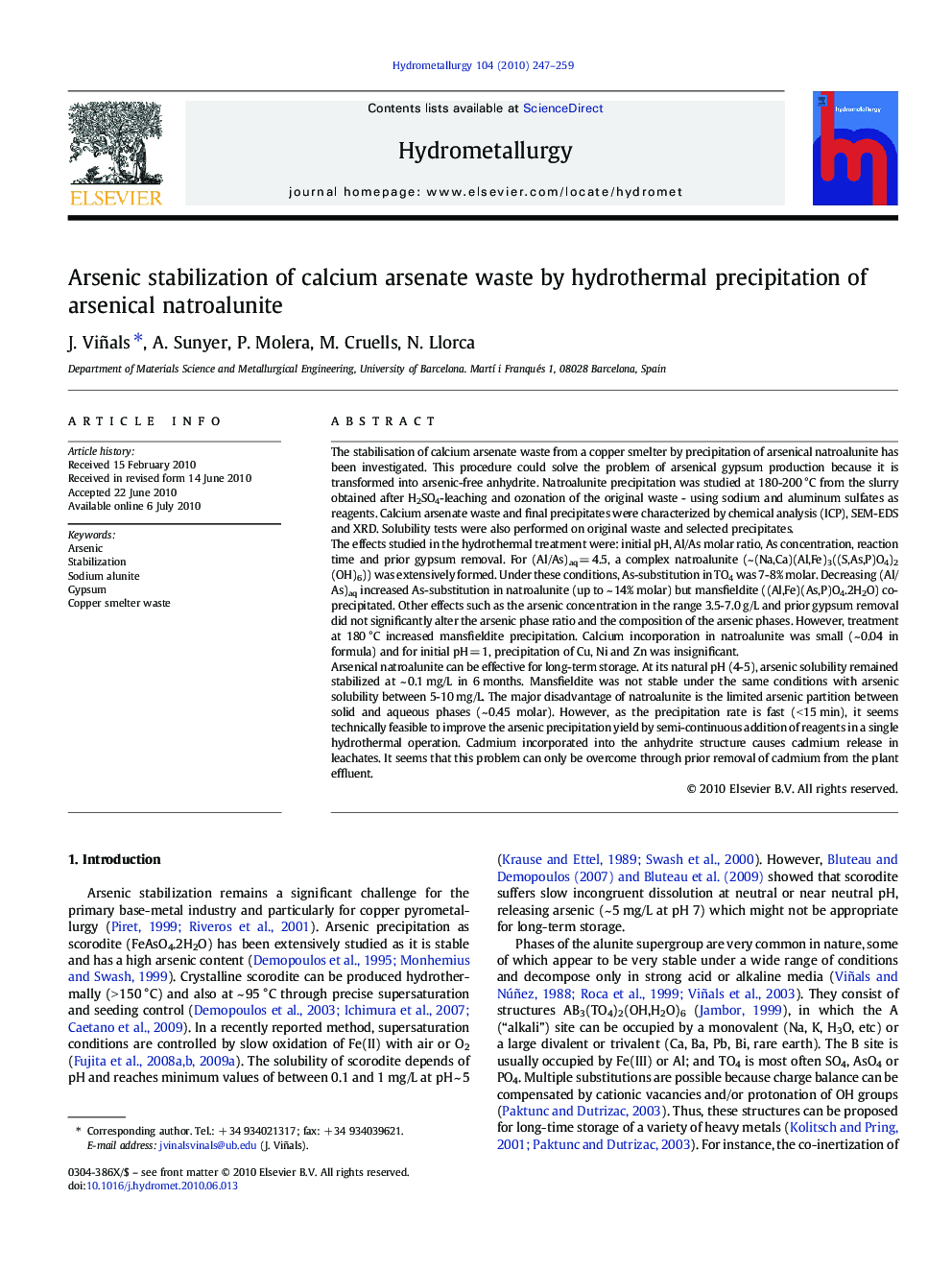| کد مقاله | کد نشریه | سال انتشار | مقاله انگلیسی | نسخه تمام متن |
|---|---|---|---|---|
| 212838 | 462069 | 2010 | 13 صفحه PDF | دانلود رایگان |

The stabilisation of calcium arsenate waste from a copper smelter by precipitation of arsenical natroalunite has been investigated. This procedure could solve the problem of arsenical gypsum production because it is transformed into arsenic-free anhydrite. Natroalunite precipitation was studied at 180-200 °C from the slurry obtained after H2SO4-leaching and ozonation of the original waste - using sodium and aluminum sulfates as reagents. Calcium arsenate waste and final precipitates were characterized by chemical analysis (ICP), SEM-EDS and XRD. Solubility tests were also performed on original waste and selected precipitates.The effects studied in the hydrothermal treatment were: initial pH, Al/As molar ratio, As concentration, reaction time and prior gypsum removal. For (Al/As)aq = 4.5, a complex natroalunite (~(Na,Ca)(Al,Fe)3((S,As,P)O4)2(OH)6)) was extensively formed. Under these conditions, As-substitution in TO4 was 7-8% molar. Decreasing (Al/As)aq increased As-substitution in natroalunite (up to ~ 14% molar) but mansfieldite ((Al,Fe)(As,P)O4.2H2O) co-precipitated. Other effects such as the arsenic concentration in the range 3.5-7.0 g/L and prior gypsum removal did not significantly alter the arsenic phase ratio and the composition of the arsenic phases. However, treatment at 180 °C increased mansfieldite precipitation. Calcium incorporation in natroalunite was small (~ 0.04 in formula) and for initial pH = 1, precipitation of Cu, Ni and Zn was insignificant.Arsenical natroalunite can be effective for long-term storage. At its natural pH (4-5), arsenic solubility remained stabilized at ~ 0.1 mg/L in 6 months. Mansfieldite was not stable under the same conditions with arsenic solubility between 5-10 mg/L. The major disadvantage of natroalunite is the limited arsenic partition between solid and aqueous phases (~ 0.45 molar). However, as the precipitation rate is fast (< 15 min), it seems technically feasible to improve the arsenic precipitation yield by semi-continuous addition of reagents in a single hydrothermal operation. Cadmium incorporated into the anhydrite structure causes cadmium release in leachates. It seems that this problem can only be overcome through prior removal of cadmium from the plant effluent.
Research highlights
► Arsenic stabilization of calcium arsenate waste by hydrothermal precipitation of arsenical natroalunite
► 22 pp plus 18 figs and 7 tables
► The paper was focused on a significant topic in copper metallurgy: the arsenic inertization from process wastes. The research is a part of a project founded by the Spanish government (MAT 2007-61466) which studied the arsenic incorporation in the structure of the alunite-type phases through hydrothermal precipitation. The paper gives an overview of As substitution in synthetic natroalunite at 200 °C as well as the application in a real waste. Also, the composition and the solubility of the hydrothermal precipitates were reported.
Journal: Hydrometallurgy - Volume 104, Issue 2, September 2010, Pages 247–259